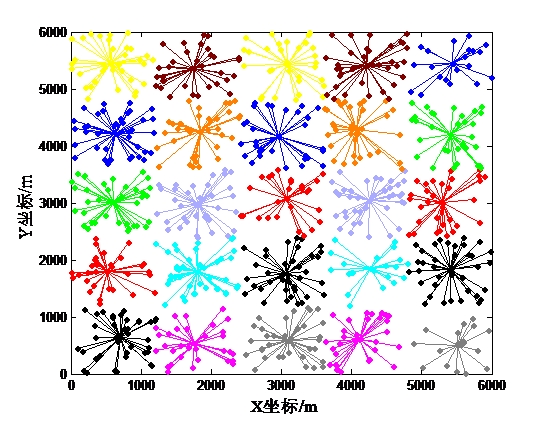基于互联网的城市公共自行车系统优化调度策略毕业论文
2021-02-24 10:30:51
摘 要
随着社会的发展,城市交通系统不断革新,目前的公共交系统已经无法满足人们的出行要求,也无法真正解决“最后一公里”的问题,因此,基于互联网的共享单车应运而生,它因价格优惠、停取方便等优势,迅速发展。但由于共享单车“无桩停放”的特点,严重影响了用户的用车体验和共享单车的规范管理。因此,研究共享单车的优化调度具有重要意义。
首先,本文阐述了共享单车的调度模式和调度特点,研究了与城市公共自行车调度的差异性。随后,本文基于共享单车用户的数量和位置信息,建立重心点法模型得到调度站点的位置和投放量。以调度站点的需求量为基础,调度过程的成本费用与未调度所造成损失的最小值作为目标函数,建立了无桩共享单车的优化调度模型,并考虑了调度车辆的约束条件。本文对路径优化调度模型的算法适用性进行分析,提出了运用遗传算法求解该优化调度模型。
最后,为了研究模型正确性,本文基于一个区域的相关数据,运用遗传算法求解建立的优化调度模型,得到了该区域的最优调度路径和最优的调度成本,并结合实际情况对结果的准确性进行了分析和讨论。结果表明,本文的模型对解决无桩共享单车的优化调度具有很强的适用性。
关键词:无桩停放;重心点法;遗传算法;最优调度路径;调度成本
Abstract
With the development of society and urban transport system, the current public system has been unable to meet people's travel requirements, cannot solve the "last mile" problem well, so the Internet-based shared bicycle is coming, because its price concessions, convenience of stopping or taking for people, the Internet-based shared bicycle is in rapid development. However, due to the sharing bicycle of "no pile parking" features, it seriously affected the users' vehicle experience and the standard management of sharing bicycles. Therefore, it is of great significance to study the optimal scheduling of sharing bicycles.
First of all, this paper describes the scheduling model and scheduling characteristics of sharing bicycles, and studies the differences from urban public bicycle scheduling. Then, based on the number and location information of the sharing bike users, the method of gravity center model is established to get the location and delivery of the scheduling station. With the demand for site scheduling based on minimum cost and scheduling process scheduling is not caused by loss as the objective function, the establishment of the pile sharing scheduling model bicycle, and considering the constraints of vehicle scheduling. Then, this paper analyzes the applicability of the algorithm, and proposes a genetic algorithm to solve the optimal scheduling model.
Finally, in order to study the validity of the model, this paper uses an example to validate the model, using Matlab to realize the optimization model of genetic algorithm, the optimal scheduling and optimal path in the area of scheduling cost, combining with the actual situation of the accuracy of the results are analyzed and discussed. The result shows that the proposed model is applicable to the optimal scheduling of shared buses without piles.
Key Words:no pile parking; gravity point method; genetic algorithm; optimal scheduling path; scheduling cost
目 录
摘 要 I
Abstract II
第1章 绪论 1
1.1 研究背景及意义 1
1.2 国内外研究现状 2
1.2.1 自行车需求规模预测研究 2
1.2.2 调度站点位置的优化分析 3
1.2.3 调度路径优化研究 3
1.2.4 路径优化调度算法的研究现状 3
1.3 研究内容、方法和技术路线 4
1.3.1研究内容 4
1.3.2 研究的方法 5
1.3.3 研究的技术路线 6
第2章 共享单车的调度需求分析 7
2.1 共享单车的特点 7
2.1.1 共享单车的无桩停放 7
2.1.2 共享单车市场的激烈竞争 7
2.1.3 共享单车调动的自主性 7
2.2 共享单车调度的必要性 8
2.3 共享单车调度的关键问题分析 8
2.4 共享单车的调度策略 8
本章小结 9
第3章 共享单车的优化调度模型 10
3.1 共享单车调度模型的分析 10
3.2 共享单车调度模型的假设 10
3.3 共享单车调度模型的建立 11
3.3.1 共享单车的调度站点分析 11
3.3.2 共享单车需求模型的建立 12
3.3.3 共享单车的调度模型 13
本章小结 15
第4章 共享单车调度模型的求解方法 16
4.1 共享单车调度模型求解讨论 16
4.1.1 精确算法 16
4.1.2 启发式算法 16
4.2 遗传算法的算法原理和流程 17
4.2.1 遗传算法的基本原理 17
4.2.2 遗传算法的基本原理 18
4.3 基于遗传算法的共享单车优化调度算法 18
4.3.1 共享单车优化调度算法的设计思路 18
4.3.2 基于遗传算法的共享单车优化调度算法实现 20
本章小结 20
第5章 算例分析 21
5.1 共享单车调度站点和调度规模 21
5.2 共享单车的调度方案 22
5.2.1 共享单车的调度需求量 22
5.2.2 调度参数设置 23
5.2.3 调度方案结果 23
本章小结 24
第6章 总结和展望 25
6.1 全文总结 25
6.2 研究展望 25
参考文献 27
致谢 29
- 绪论
- 研究背景及意义
随着社会的发展和进步,城市交通系统不断发展,机动车化水平也不断提高,人们对于出行方式有了更高的要求。但是随着高速增长的机动化车辆使用量,导致了城市交通的严重拥堵,环境问题日益突出,严重影响着城市的进一步发展,同时对人类的健康带来巨大的伤害。因此,在这样的条件下,公共交通以集约化、资源利用高效、绿色等优点成为城市缓解交通拥堵、环境污染等矛盾的方案共识。但是目前的公共交通诸如地铁,公交等,因乘坐不方便、用户体验差等缺点,无法满足人民的出行需求,也无法真正解决“最后一公里”的问题[1]。因此,在这一的条件下,公共自行车应运而生。
公共自行车 (Public Bicycle) 的概念源于欧洲[2],最早出现于1965年。随后,这种方式逐渐在几个西方发达国家迅速普及,逐步发展成为了公共自行车系统。随着我国不断的发展与进步,城市交通的拥挤问题日益凸显,因此我国开始重视并发展公共自行车这种交通方式,在武汉、成都等地相继建立了有桩的公共自行车系统。城市公共自行车的引入很大程度上解决了市民短途出行的问题,提供了很大的便利。同时城市公共自行车爷在一定程度上提倡环保出行,为减小汽车尾气排放起到了一定的作用。但是,有桩的城市公共自行车有明显的弊端,因为该自行车停取车时必须在自行车桩,极大的影响了用户的借还车和使用车的体验。此外在高峰期时,由于车桩的地理位置和车位的限制,导致用户面临无法借车、无法换车的问题。
随着互联网时代的愈发成熟和普及以及共享经济的提出,平台型、共享型经济慢慢演进成社会发展的主流趋势,2014年北大毕业生戴威与4名合伙人共同创立小黄车(ofo),致力于解决大学校园的出行问题。2015年5月,超过2000辆共享单车出现在北大校园。到2016年底以来,除ofo和摩拜单车以外,国内市场已经涌现出20多家共享单车的公司和品牌,通过引入“互联网 ”使得原来普通的有桩公共自行车变成了基于互联网的城市无桩公共自行车——共享单车。通过在在校园、地铁站点、公交站点、居民区、商业区、公共服务区等提供自行车单车共享服务,成为了共享经济的一种新形态。此外,自行车共享计划正好迎合了政府提倡的环保政策,加之潜在的市场非常巨大,表明了共享单车具有良好的发展前景。
相关图片展示:











